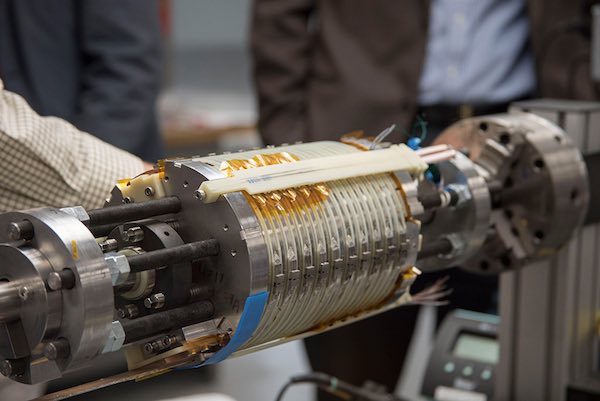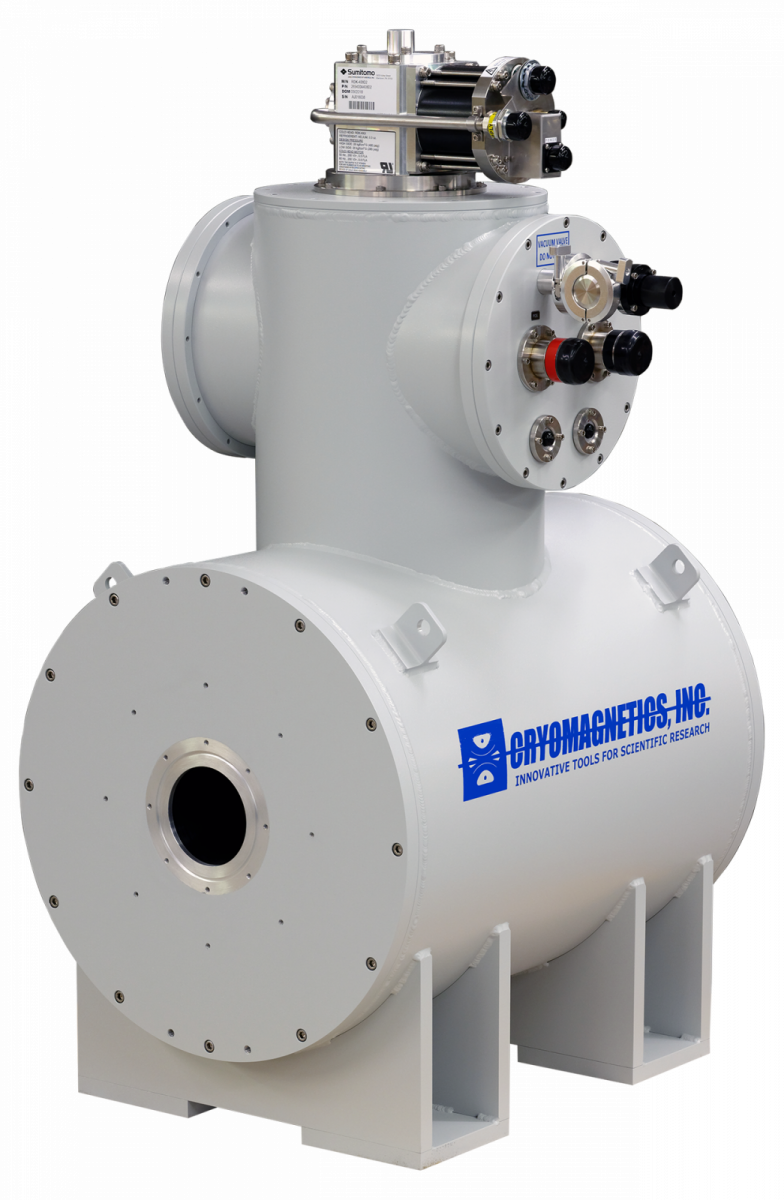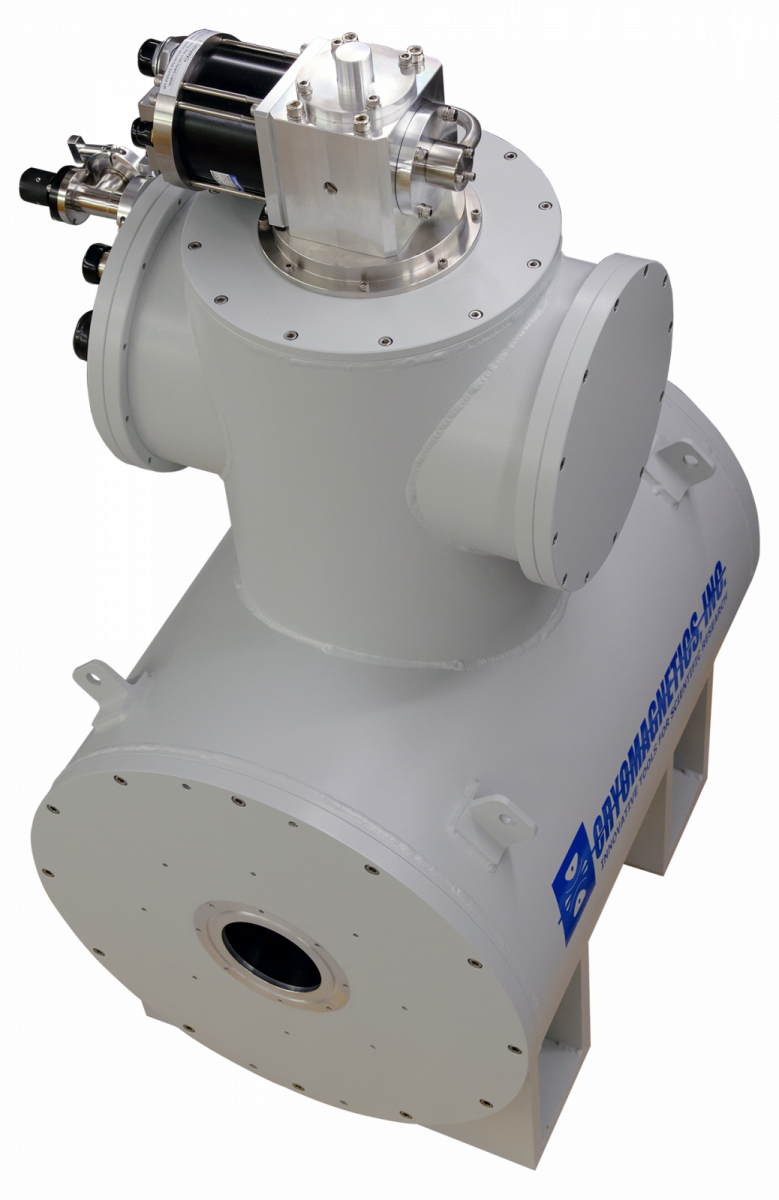In addition to continually developing our range of Cryofree research products, Oxford Instruments’ unique depth of technical expertise and hands-on engineering experience in the design, manufacture and support of superconducting magnets and cryogenic systems enables us to create custom-engineered solutions for customers’ specific application and experimental needs.
Superconducting magnet technology has remained at the heart of Oxford Instruments throughout our history since being the company’s founding technology in 1959. As much as we are proud of this heritage, we do not rely upon it and we continue to bring our wealth of experience to every new opportunity and challenge. Our superconducting magnet systems provide our customers with their own world-leading capabilities across many applications in both physical and life sciences, applying our depth and breadth of magnet know-how from relatively simple solenoid magnet to complex split pairs and high stored energy magnet systems.
A superconducting magnet is just like a regular electromagnet, except that there is no resistance to electricity. If it's a resistive coil, you're losing power, and it's generating heat. There's no heat generation here, so you're not losing energy. For that, you can generally go to higher currents, which means you can have a more compact magnet. A superconductor is a material that offers no electrical resistance and expels magnetic fields. All known superconductor materials are solids, and only exhibit superconducting properties when cooled to very low temperatures. With the Type II superconductors used in these experiments, the magnetic field is ejected because of the Meissner effect.
As would be expected, our technologies encompass both Cryofree® and “wet” liquid helium-cooled magnets, applying the cooling solution as appropriate to the customer, the application, and the magnet design requirements. With our specialist teams, customers can work through the trade-offs in technology and budget to develop their system requirements into a realisable specification and design.
Before this new magnet reached full field in December 2017, the world's strongest superconducting user magnet had a field strength of 23.5 teslas. At 32 teslas, this new record-holder is a whopping 8.5 teslas stronger than the previous record – a giant leap in a technology that, since the 1960s, has seen only baby steps of 0.5 to 1 tesla.
| Project Specs | |
|---|---|
| Strength | 32 tesla |
| Type | All superconducting |
| Cold bore size | 34 mm |
| Successfully tested at full field | December 2017 |
| Superconductors | YBCO (2 coils), Niobium-Tin (3 coils), and Niobium-Titanium (2 coils) |
| Mass | 2.3 tons |
| Customer | National Science Foundation / Florida State University |
Superconducting Magnet jobs. Displayed here are Job Ads that match your query. Indeed may be compensated by these employers, helping keep Indeed free for jobseekers. Indeed ranks Job Ads. The main dipoles generate powerful 8.3 tesla magnetic fields – more than 100,000 times more powerful than the Earth’s magnetic field. The electromagnets use a current of 11,080 amperes to produce the field, and a superconducting coil allows the high currents to flow without losing any energy to. The bulk high-temperature superconducting magnet can be magnetized by the field-cooling method. First, the bulk magnet is kept above the transition temperature, and is immersed in the magnetic field. This is done by placing it into a superconducting magnet that is used in the conventional NMR system.
The groundbreaking instrument will considerably reduce the cost of scientific experiments and make high-field research accessible to more scientists. The system will also support decades worth of new science. Due in large part to the quieter environment a superconducting magnet offers over a resistive magnet of equivalent strength, the 32 tesla will help scientists break new ground in nuclear magnetic resonance, electron magnetic resonance, molecular solids, quantum oscillation studies of complex metals, fractional quantum Hall effect and other areas. The magnet is expected to become available to users in 2019.

Begun in 2009, the project represents a breakthrough in superconducting magnet technology on many fronts. Among other innovations, it combines low-temperature superconductors commonly used in today’s superconducting magnets - niobium tin and niobium titanium -- with “YBCO,” a superconducting ceramic composed of yttrium, barium, copper and oxygen. Although YBCO-coated conductors in this case operate at the same temperature and in the same helium bath as their metallic counterparts, they remain superconducting far above the practical magnetic field limits inherent to niobium-based superconductors. For this reason, YBCO can also be called a high-field superconductor; it superconducts at far higher temperatures than niobium-based materials but, like all superconductors, performs best at very low temperatures.

When it becomes available to users, the 32 tesla will be the first high-field magnet available to researchers to incorporate YBCO, a finicky material a few commercial companies have been developing for years in collaboration with MagLab engineers and scientists. The 2.3-ton magnet system features about 6 miles of YBCO tape, formed into 112 disc-shaped “pancakes.” Two inner coils of YBCO, fabricated at the MagLab are surrounded by a commercial outsert consisting of three coils of niobium-tin and two coils of niobium-titanium.
The new magnet will particularly be more attractive for users whose experiments require lower noise and longer running times than the resistive magnets can offer, while the relatively fast ramp-rate of 32 T/hour in this superconducting magnet also allow for many field sweeps per day.
Image Gallery
Click on an image for more details.
https://nationalmaglab.org/magnet-development/magnet-science-technology/magnet-projects/32-tesla-scm#sigProId139d76c065
Superconducting Magnets Are Used In Machines


Documents
Testing of prototype coils for the NHMFL 32 T superconducting user magnet08/01/2014 (July 2014)

Staff Contacts
Superconducting Magnetometer
Project manager Mark Bird.
